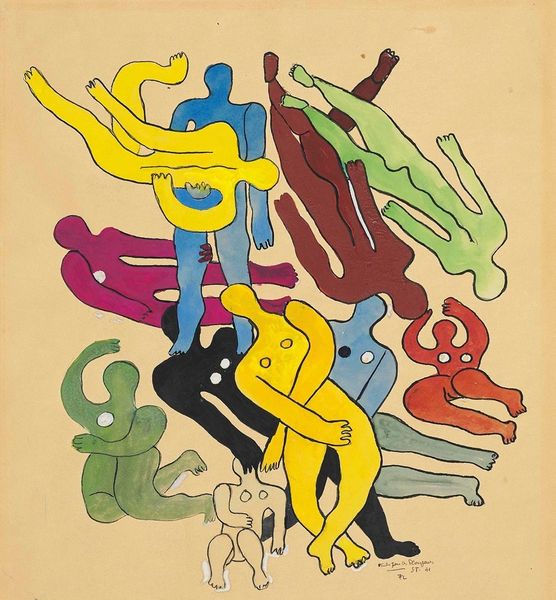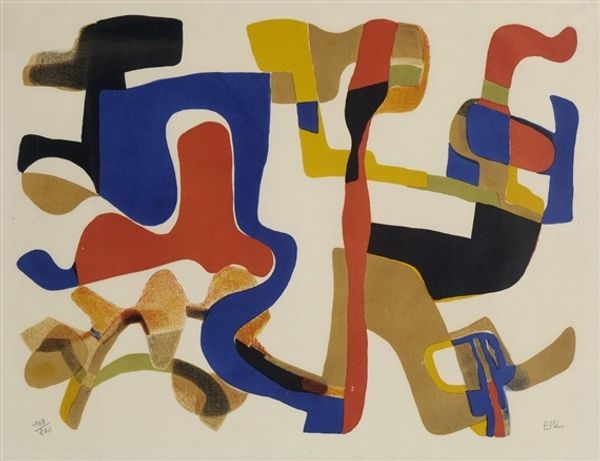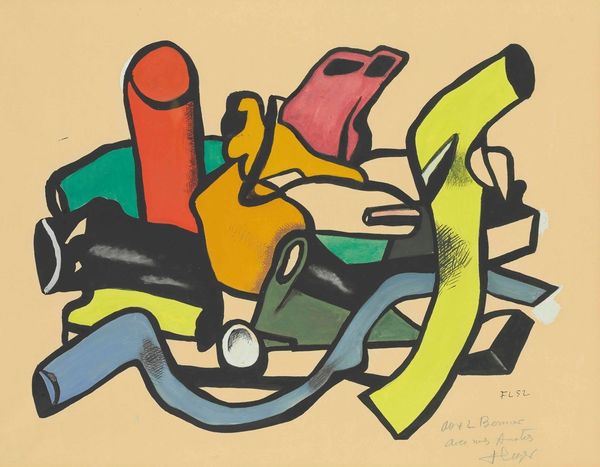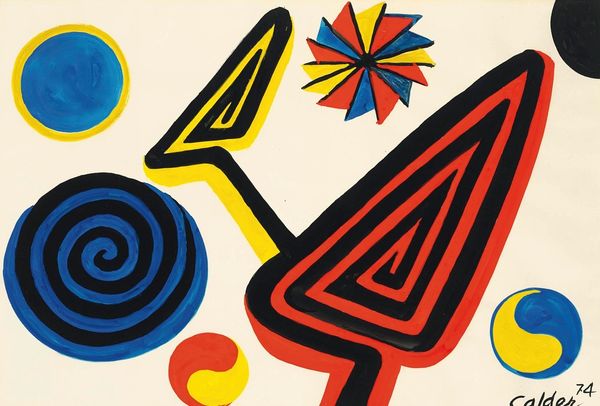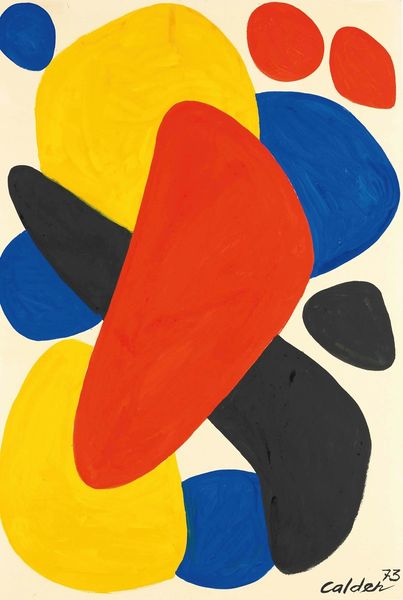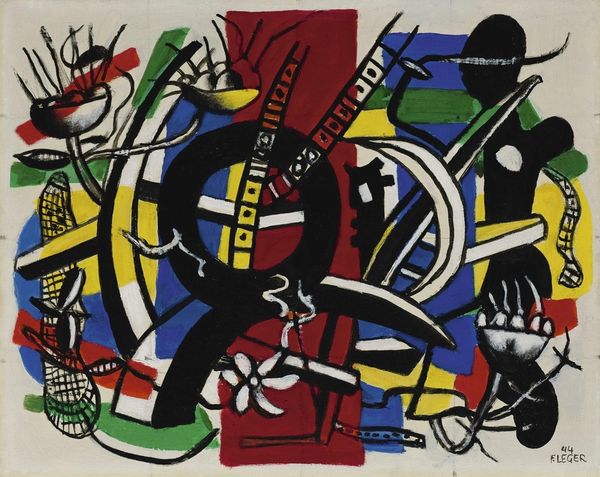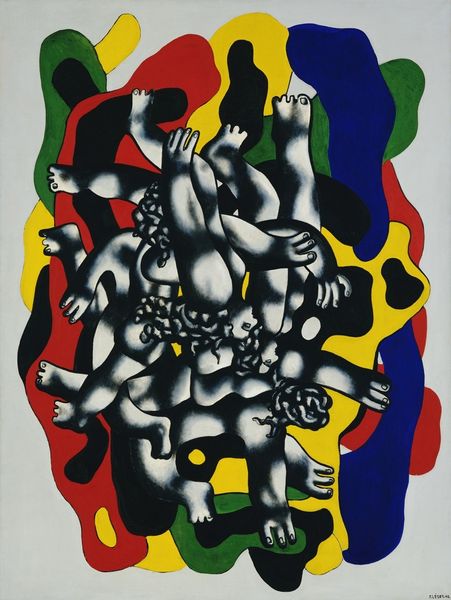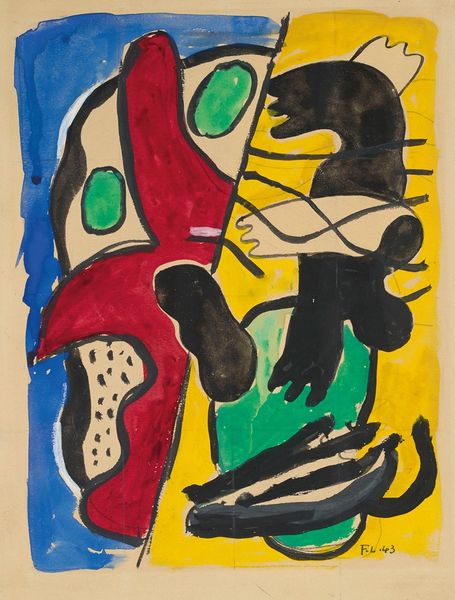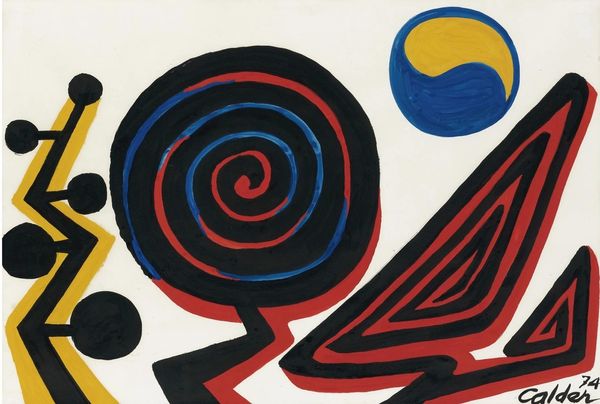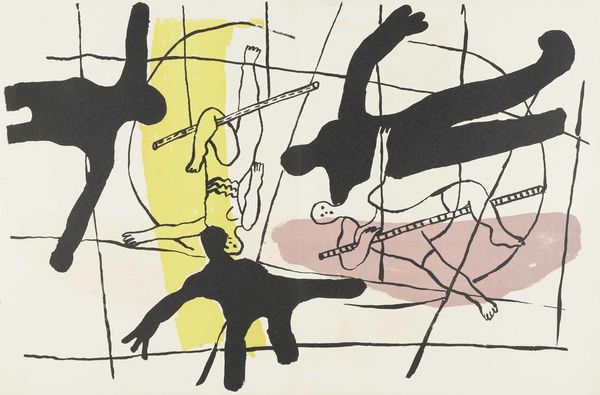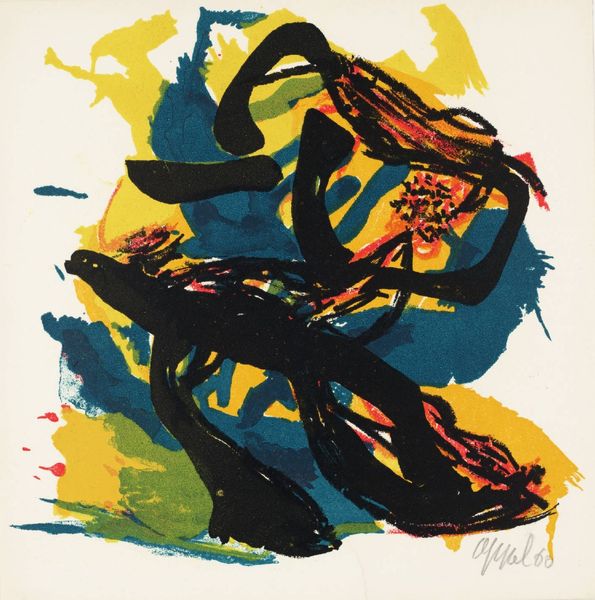
Copyright: Modern Artists: Artvee
Editor: So, here we have Fernand Léger’s *Les plongeurs*, made around 1942. It seems to be mixed media, painting and drawing perhaps, showing a group of brightly colored figures tumbling together. There's a chaotic energy to it, almost a sense of playful disarray. What do you make of this piece? Curator: Léger’s work from this period is particularly fascinating when considered against the backdrop of World War II. While many artists directly addressed the conflict, Léger, who spent time in the US during the war, explores themes of resilience and the collective human experience in a more abstracted manner. Do you notice how the figures, although fragmented, interlock and support each other? Editor: Yes, they are almost intertwined, though it is not easy to distinguish who or what they are exactly doing. Does this suggest that sense of collectivity you mention? Curator: Precisely. The rounded forms, bold colors, and simplified figures point to a celebration of the human spirit, a counterpoint to the devastation happening in Europe. Léger was deeply interested in how art could function within a democratic society. Can you see how the lack of a clear hierarchy within the composition reinforces this idea? Editor: I can see how there is a rejection of traditional perspective and hierarchy. It is kind of flattened with its intense colors and shapes that all have pretty much equal weight. Curator: Indeed. By creating a scene of apparent disorder and then weaving the figures together into a balanced, if unconventional, whole, Léger perhaps suggests a vision of society capable of finding harmony amidst chaos. Considering the historical context, *Les Plongeurs* is an intriguing example of how art can address difficult subjects through formal innovation and a message of communal strength. Editor: That's a really insightful interpretation. It makes me see the painting in a totally different way, thinking about it as a response to wartime anxieties. Curator: And hopefully makes us reconsider the ways artists, especially during times of crisis, can re-imagine the socio-political fabric with optimism and in abstract and metaphorical ways.
Comments
No comments
Be the first to comment and join the conversation on the ultimate creative platform.
